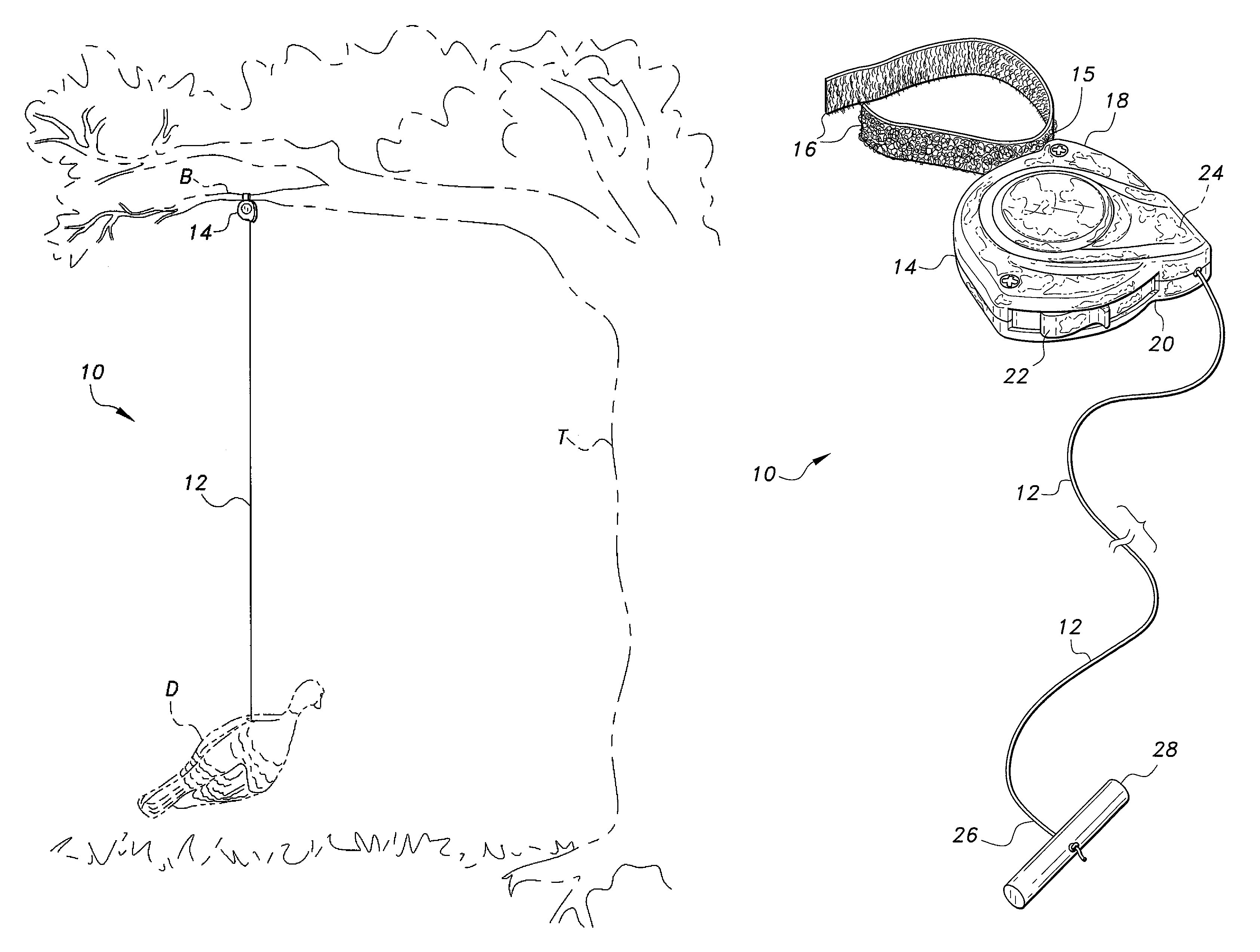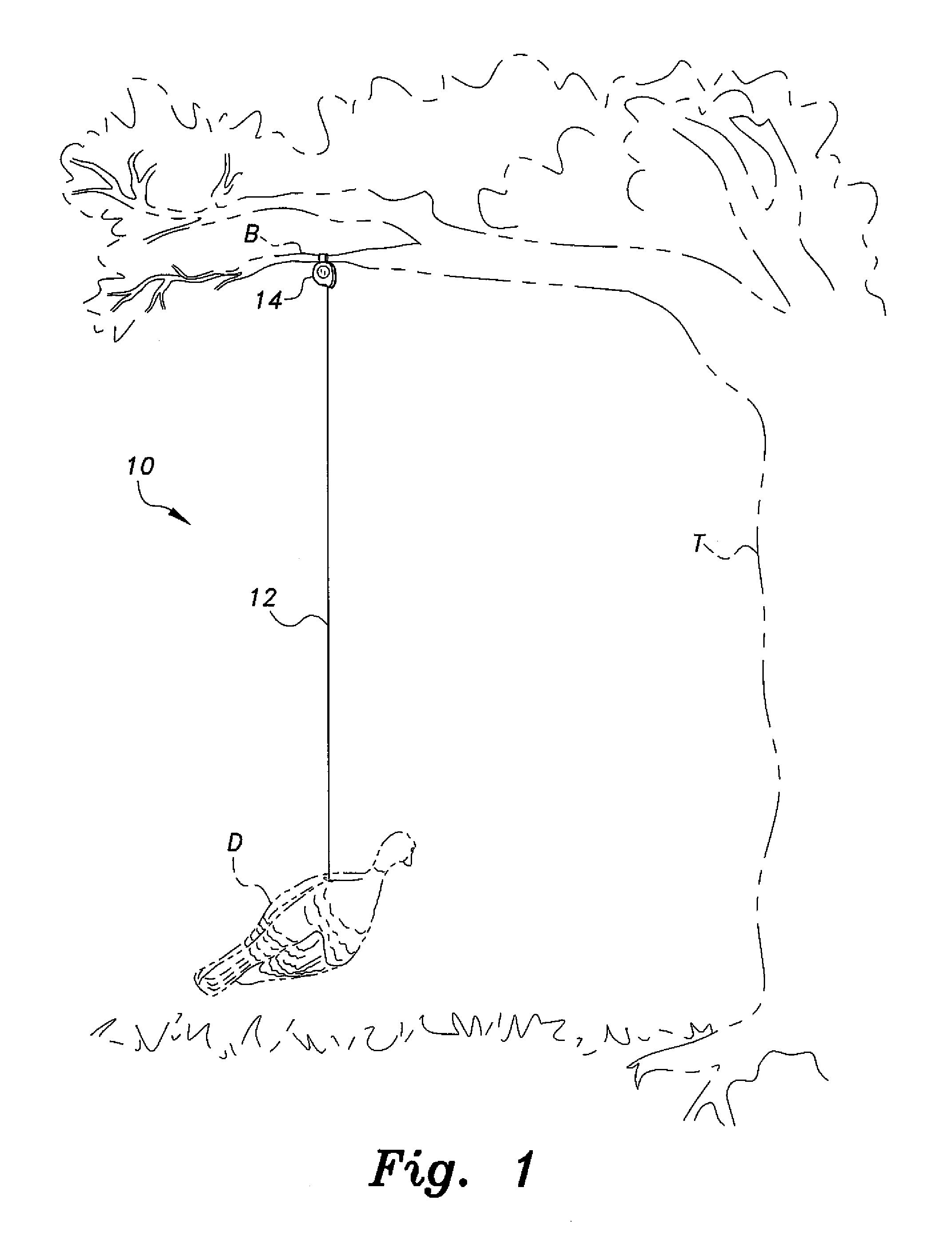Decoy suspension system
a suspension system and decoy technology, applied in the field of decoy suspension system, can solve the problems of difficult to distinguish from the real animal at a glance, not imitate or replicate the typical movement of the game animal, and realistic decoys
- Summary
- Abstract
- Description
- Claims
- Application Information
AI Technical Summary
Benefits of technology
Problems solved by technology
Method used
Image
Examples
Embodiment Construction
[0019]The decoy suspension system provides for the suspension of a reasonably lightweight decoy from an overhead arm, e.g., a tree branch, to allow the decoy to move freely in a light breeze. This movement, along with a reasonably realistic representation of the animal, attracts like animal species to a much greater extent than a stationary decoy placed upon the surface of the ground.
[0020]FIG. 1 of the drawings provides an environmental view of the decoy suspension system 10, shown suspended from an overhanging branch B of a tree T and having a decoy D mounted thereon. The decoy suspension system 10 comprises a reel having a selectively extendible and retractable decoy suspension line 12 extending therefrom. The suspension line 12 is preferably of relatively low visibility to minimize the chance of detection by game animals, and is preferably formed of a length of transparent monofilament fishing line or the like. The reel is conventional and is urged to retract the suspension line...
PUM
 Login to View More
Login to View More Abstract
Description
Claims
Application Information
 Login to View More
Login to View More - R&D
- Intellectual Property
- Life Sciences
- Materials
- Tech Scout
- Unparalleled Data Quality
- Higher Quality Content
- 60% Fewer Hallucinations
Browse by: Latest US Patents, China's latest patents, Technical Efficacy Thesaurus, Application Domain, Technology Topic, Popular Technical Reports.
© 2025 PatSnap. All rights reserved.Legal|Privacy policy|Modern Slavery Act Transparency Statement|Sitemap|About US| Contact US: help@patsnap.com



